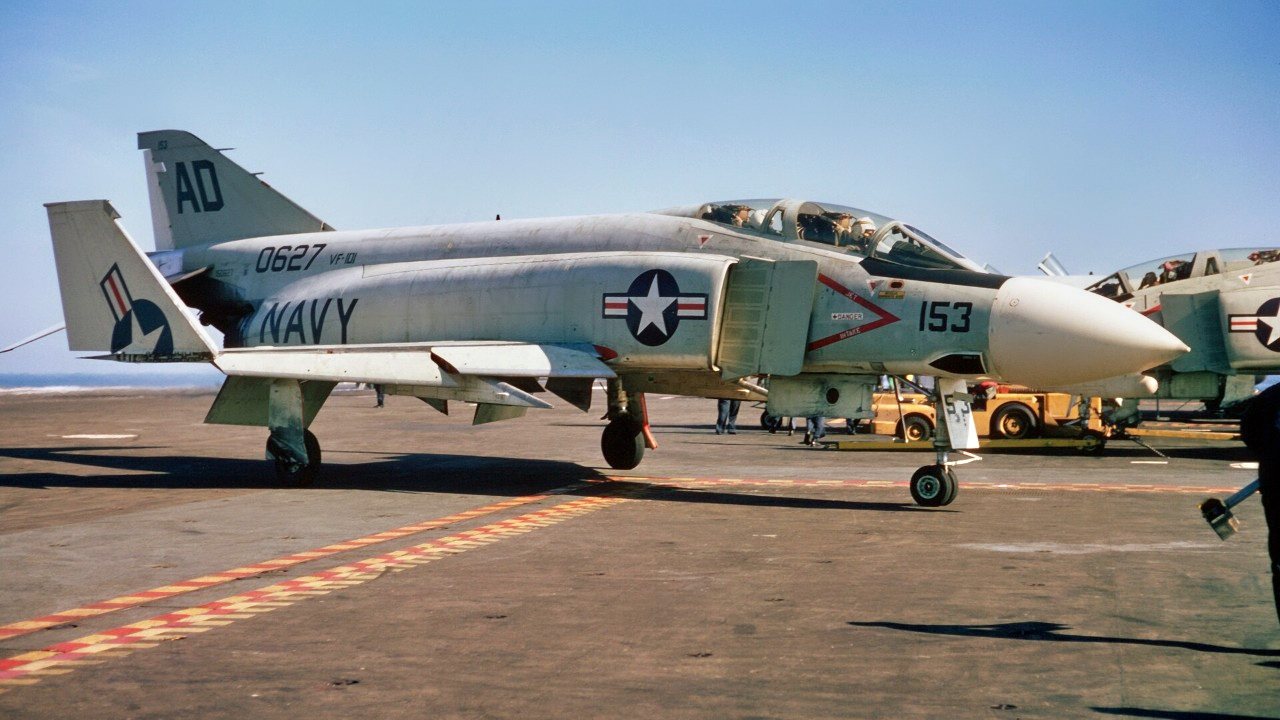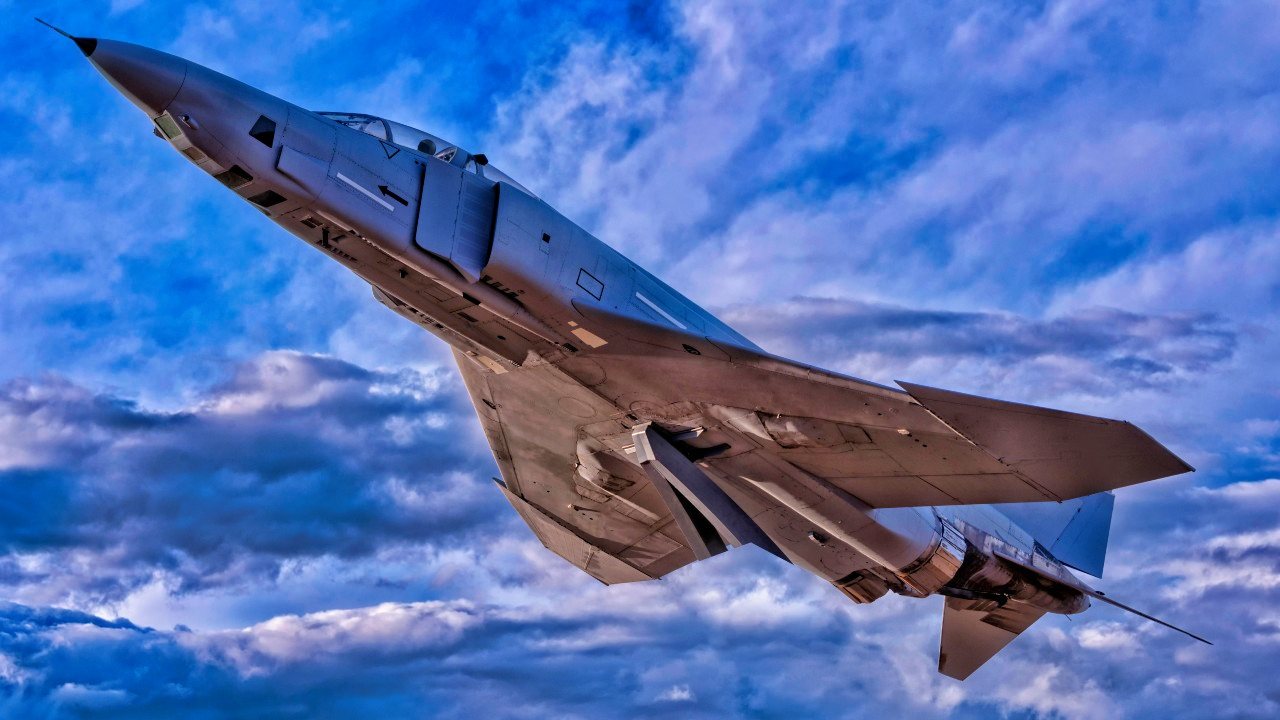The Air Force Was Unprepared to Dogfight in Vietnam—And It Paid the Price
Between February 1962 and October 1973, the United States lost 1,737 fixed-wing aircraft in combat, with another 517 going down due to other issues in Vietnam.
Today, America prizes air superiority in its approach to warfare, but there’s a growing sentiment among many within the defense apparatus that dogfights, or close-quarters air-to-air combat, is a thing of the past. Advanced sensors and highly effective air-to-air weapons that can reach beyond visual ranges suggest air combat will now take place at longer distances than ever, making the need for aerobatic air superiority jets a thing of the past.
This sentiment can be found in statements made by many modern fighter pilots, but might be best reflected in this post from an F-16 pilot that went viral in aviation circles shortly after it went up:
The Raptor is about as cool as it gets, and it is the greatest air superiority fighter the world has ever seen, but like the F-15C that it was originally designed to replace it is an airplane without a real mission in modern conflict,” Air Force F-16 pilot Rick Scheff famously explained in an online discussion.
“When was the last time an American fighter killed another fighter in an air-to-air engagement? Go look it up, I’ll wait.”
Objectively speaking, there’s some real truth to Scheff’s statement. It seems inevitable that dogfights of a sort will break out any time two nations put a large volume of tactical aircraft into the same airspace, but it is hard to deny that there have been no fights between global powers for the better part of 80 years.
But those who disagree with the idea that close-quarters air battles are a thing of the past would posit that this period of relative peace and stability in our world is an exception. They would argue that Vietnam is a good example of how dogfights occur when airpowers tussle, and that we should be careful not to assume that the days of airpowers going to war are over, simply because it hasn’t happened lately.
To be clear, there are valid points to argue on either side of this debate, but it’s important not to lose sight of the complexity of the air war over Vietnam when using it as the foundation for an argument about dogfights. The truth is, America’s difficulties over Vietnam can’t be summed up in a single sentence about a lack of guns in the F-4 or the failures of a certain missile platform.
America’s troubles in the skies over Vietnam began well before the first shots of the conflict were fired, and continued well into the fighting. Some of the issues were technological, while others were bureaucratic and even political. The truth is, America lost aircraft and pilots over Vietnam not because of a single incorrect conclusion (“dogfights are over”), but rather because of a litany of errors that were – largely – made with the best of intentions.
There are lessons to be learned from the dogfights of Vietnam. We must look at them with clear eyes, to ensure we’re learning the right ones.
JUST HOW BAD WERE THE DOGFIGHTS OVER VIETNAM?
Tactical Figther Wing, on June 3, 1967. The F-105 was “a very poor plane in a dogfight” but it packed a fast-shooting 20mm cannon — early models of the F-4 did not have a gun. (US Air Force photo via National Archives)

During the Vietnam War, American fighter pilots saw a significant downturn in kill-to-loss ratios as compared to figures from the Korean War. Some argue US pilots over Korea came home with a 10:1 kill ratio (or 10 enemy fighters shot down for every U.S. fighter lost). However, that figure was originally meant to be specific to the F-86 Sabre, and nevertheless, modern historians believe it to be inflated. Real figures were likely closer to a still-impressive 8:1.
At times during the Vietnam War, on the other hand, that ratio had diminished to less than 1:1. That means that during some periods, the North Vietnamese were shooting down more American fighters than they were losing. While the overall ratio was significantly better, likely closer to 5.5:1 across the total force, the harsh reality of air combat over Southeast Asia can perhaps best be appreciated when looking at the hard numbers.
Between February 1962 and October 1973, the United States lost 1,737 fixed-wing aircraft in combat, with another 517 going down due to other issues in Vietnam. Throughout the entirety of the war, it was exceedingly rare for a week to pass without an American aircraft being lost in the fight, and at times, it happened daily.
The U.S. Air Force lost 40 percent of its entire fleet of F-105 Thunderchiefs over Vietnam. Additionally, a bit more than 12 percent (about one out of every eight) of F-4s built for all services met their end over Vietnam’s jungles. It’s very important to note, however, that the Air Force and Navy weren’t taking these losses lying down. In fact, the Air Force improved its tactics so dramatically over the course of the war that in the final five months of it, its fighter pilots were downing the enemy at a rate of 15:1.
THE NUMBERS MATTER, BUT THE LESSONS MATTER MORE
This sort of picking nits is important for the sake of an accurate historical record. However, it doesn’t erase the fact that in the late 1950s and early 1960s, America seemed to incorrectly believe that close-quarters dogfighting was a thing of the past thanks in large part to the advent of (this will sound familiar) improved sensors and highly capable air-to-air weapons.

Such was the belief that new air-to-air missiles like the AIM-9 Sidewinder and AIM-7 Sparrow would render previous forms of dogfighting obsolete that America’s Mach 2-capable F-4 Phantom II came through production without so much as an onboard cannon, which was considered standard equipment for fighters until that time.
“That was the biggest mistake on the F-4,” John Chesire, who flew 197 combat missions in the Phantom during two tours in Vietnam, told Air & Space Magazine.
“Bullets are cheap and tend to go where you aim them. I needed a gun, and I really wished I had one.”
It wasn’t long before this line of thinking put American pilots into some pretty tough situations, as they tried to do battle with the notably slower and less advanced MiG 15, 17s, 19s, and 21s swarming the skies over Vietnam. Their ability to take tight turns and orient their noses at the faster-moving American fighters before they could swing around gave them opportunities to score gun kills. And to make matters worse, America’s new missiles didn’t always quite work as advertised, costing pilots valuable opportunities to down their opponents when they could.
THE F-4 WAS BUILT FOR A DIFFERENT KIND OF WAR
While a lack of guns didn’t do the F-4 any favors, that was just one of many variables that eventually conspired against American pilots in dogfights over Vietnam. As explained by Benjamin Lambeth in his book, The Transformation of American Air Power (Cornell Studies in Security Affairs), America’s emphasis on winning the nuclear fight – fielding fast-moving fighters designed to intercept Soviet aircraft at long distances or carry heavy nuclear payloads – left its pilots at a disadvantage against harder-cornering platforms like the MiG-17 and 21. But the disadvantage extended well beyond turn performance.

The F-4 Phantom II offered poor visibility to the rear from inside the cockpit, making it tough to keep an eye on slower-moving opponents as they passed by. To make matters worse, the J-79 engines that could propel the F-4 past Mach 2 were known to produce a heavy smoke trail when not flying under afterburner. Contemporary reports suggest the smoke trail left by American F-4s would remain visible for as far as 30 miles, giving Vietnamese fighters, and crews on the ground, ample opportunity to spot and track the American jets as they flew through contested airspace.
Once the fight was on, American F-4s had a very narrow window of opportunity to leverage any advantage they might have. According to one declassified performance comparison between American and North Vietnamese aircraft, “only in range and first-shot capability does the F-4C enjoy a substantial advantage over the MiG-21 throughout the envelope.”
In other words, if the F-4 didn’t win a fight with its first shot, it was likely flying at a disadvantage from then on. Of course, that’s where problems with America’s air-to-air missiles became even more evident.
Between 1965 and March of 1968, of the 224 AIM-7s fired at enemy aircraft during air combat, only 20 resulted in kills for a success rate of just 8.9 percent. Other missiles faired better, but not much, with the AIM-4 recording a success rate of 10.7 percent and the AIM-9B coming in at 16 percent. The common perception that American air-to-air missiles failed to function as well as expected is entirely accurate. Yet, it’s certainly worth noting that the AIM-9 matured as a result, and eventually the AIM-9L provided an 80 percent success rate for the Brits in the Falklands War.
Not all of the blame can be placed on the hardware, however: Aircrew failures (like not keeping the target illuminated by radar until impact) were faulted for about 33 percent of the AIM-7’s misses. It’s also important to note that these weapons weren’t designed for this sort of combat. They were primarily intended to engage Soviet bombers at long ranges, not win dogfights over the jungles of Vietnam.


